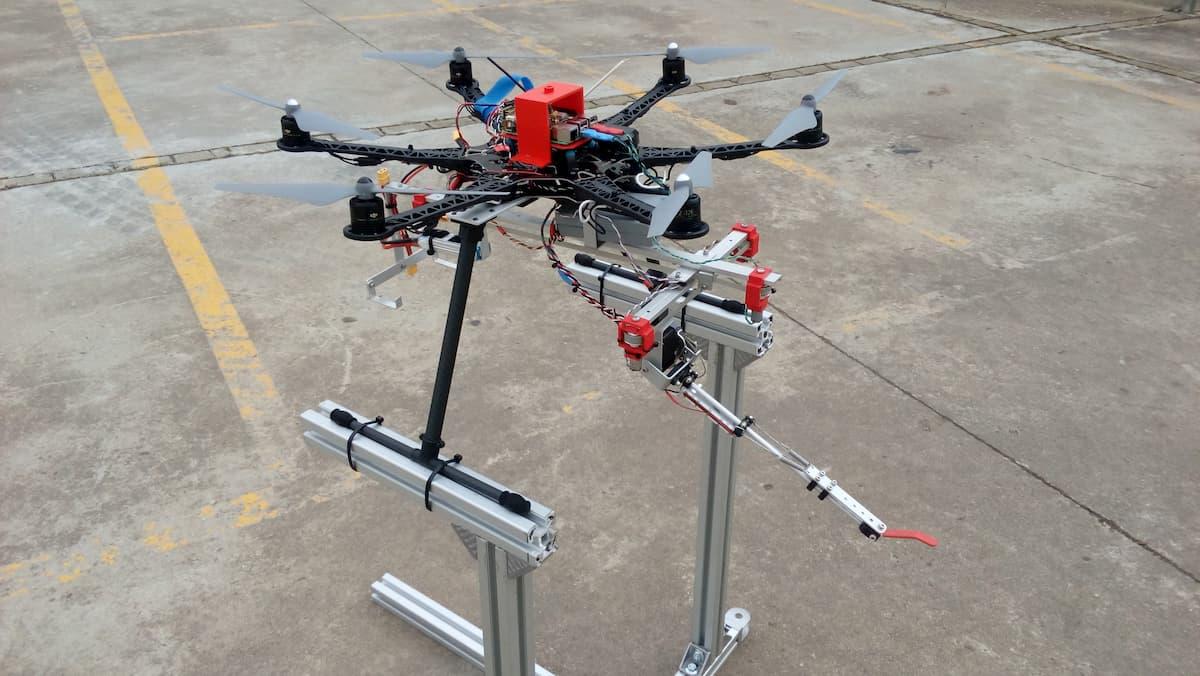 1 / 3
1 / 3A flying robot
Hardware Price:
construction
DIY
weight
light
Education project
Airborne Manipulation Robot: Combining Drones and Robotic Precision for Industrial Applications
Students at the University of Seville have developed an innovative airborne manipulation robot, combining a drone with a robotic arm to extend the capabilities of traditional drones. This system enables tasks beyond visual inspection, reaching remote or high-altitude areas for inspection and maintenance in industries such as oil and gas refineries, power lines, solar plants, and chemical facilities. The Cartesian manipulator, built using igus® linear guide systems, ensures controlled physical interaction with the environment while maintaining flight stability through compliant joint mechanisms for safety during impacts or overloads.
What is the Application?
The airborne manipulation robot automates inspection, grasping, maintenance tasks, and environmental contact, ideal for scenarios requiring precise yet lightweight tools at challenging altitudes.
What are the Advantages of the Solution?
Extended Reach: Operates in remote and high-altitude locations.
Cost-Effective Design: Lightweight construction reduces expenses.
Safety Features: Compliance mechanisms protect against overloads and impacts.
What are the Advantages of the Robot?
The drone with manipulator delivers:
High Precision: Accurate measurement of deflection in elastic components.
Resilience: Stability and durability under demanding environmental conditions.
Advanced Components: Uses igus® linear guides for smooth motion and reliability.
Transforming Industrial Maintenance with Airborne Manipulators
This airborne manipulation robot demonstrates how drones combined with robotic arms can revolutionize industrial workflows. By offering precision handling, safety-compliant mechanisms, and cost-effective designs, it presents an innovative solution for industries seeking efficient, remote, and reliable automation for inspection and maintenance tasks.
1 Component









